Market for Useful Knowledge and Non-Knowledge: On Becoming Earthlings
This forum initiated the inquiry On Becoming Earthlings (2015 –), exploring the attempts of humans to represent the different scales of environmental crises.
For the Climate Change Conference (COP21) that took place in Paris in 2015, Council organised the 18th edition and the first Market for Useful Knowledge and Non-Knowledge in France, at the Musée de L’Homme. For a duration of four hours, 75 experts from different disciplines were gathered to exchange with members of the audience for a 30 minute conversation. Each of them gave a different account on how to live and think the Anthropocene.
Market for Useful Knowledge and Non-Knowledge is a concept initiated and developed by Hannah Hurtzig and Mobile Academy Berlin in which experts from diverse fields (natural scientists, craftsmen, artists, philosophers, and neighbours) partake in a series of parallel one-on-one dialogues with members from the audience. The audience (rather a customer on this evening) can book an expert and his or her offer of knowledge for half an hour. Learning and unlearning, knowledge and non-knowledge, and strategies of living and surviving change ownership in a non-institutional way. Markets have been staged in Berlin, Warsaw, Vienna, Riga, Tallin, Liverpool, Jaffa and other places.
The project entitled On Becoming Earthlings was co-curated by Alexander Klose and Nataša Petrešin-Bachelez.![]()
ON BECOMING EARTHLINGS
The claim that we have entered a geo-historical era in which the global environment is predominantly influenced by human activities has become the challenge of our days. Yet, it is hardly understood. What does it mean to live in the anthropocene? Do we have to re-invent everything: humanness, technology, and nature, and, moreover, the relations between them? Are we even able to? And how is all this related to the overall understanding of our habitat, the earth?
Through the act of declaring the anthropocene, humanity – again – is put in the center of everything. That move has led to a lot of criticism, also regarding the aspect of responsibility and agency. There were calls to name it ‘Capitalocene’ or ‘Technocene’ instead. Or even ‘Chthulucene’ according to Donna Haraway, who suggests that eco-theory might be inspired by Chthulu, an ancient mythical power of the earth and its waters, soils, and skies. The renewed ‘anthropocentrism’ happens, though, to the price of a consequent shrinking. The age of man is not named thus, because ‘he’ has everything under control. Quite the contrary. Humankind as a species, so the lessons of the anthropocene teach us, has been determining the wheel of ‘geostory’ (Bruno Latour), i.e. geological history, the same way as isotopes and isotherms or carbon atoms: as an accumulation of an egregious multitude of single phenomena.
NEW PROPORTIONS
Living and thinking the anthropocene means to set humankind into new proportions. Anthropocene calls out for a practice of re-scaling and re-framing to establish other relations between humans and non-humans (and between humans and humans as well). We have to leave the humanistic scope of western thinking that has been taking over the rule of the world for the last roughly 500 years with its inherent strict fissures and hierarchies along the lines of ‘culture’ and ‘nature’, between humans (or to be more precise: men) and the rest. If ‘nature’ was the first colonized object of modern european thinking and conquering, then the concept of the anthropocene puts an epistemological end to colonizations of any kind. Anthropocene-thinking – to modulate a sentence by Eduardo Viveiros de Castro – is the theory and practice of permanent decolonization. There is no species, no life form, no being, as small and irrelevant as it may seem, towards which presumptuousness can be justified any longer.
Anthropocene-thinking tries to connect differently to the beings surrounding us and the environments we are living in, regardless if biological or technological. Who can teach us to become much smaller or much bigger? Small as swarm fish are, or microbes, or even molecules, in order to be able to contemplate and to commiserate, how climatological changes influence local behaviors and how these local changes retroactively have effects on their environments. Or large as clouds or geological dimensions of time, in order to be able to put ourselves in a concrete relationship with the geo-hydrological time of climate, the development time of fossil fuels, or the disintegration time of radioactive and other highly contaminated waste.
EXERCISES IN NON-HUMANNESS
Since we cannot know where this post-anthropocentrical stance will lead us, it is only possible to practically experience it. How does one exercise the anthropocene? One first step is a change of language. Whether we denote the interplay between the environment-formerly-referred-to-as-nature and the being-formerly-known-as-human ‘natureculture’, as Donna Haraway and others have done, or wether we use a completely different vocabulary, e.g. talking of ‘earthlings’ and ‘Gaia’, as Bruno Latour proposes, leaving the lingual and epistemological base of western thinking with its categorical separations between nature/culture and human/non-human, forces us on unknown territory. We can only get (out of) there step by step, relying on emergent practices and situated knowledges – exercises in post- or non-humanness: in change of perspective and scale, in decentration, in humbleness, or by acknowledging what Buddhist philosophy has been calling ‘interdependent co-arising’.
The Market invites specialists and activists from fields as diverse as climatology, artificial intelligence, biology, anthropology, ecofeminism, science fiction, performing and visual arts, integrated design, documentary film, agriculture and counterculture, shamanism, religion and other spiritual practices. Besides that, we want to draw attention to the imaginations of and for the earthlings that have always been little: many of the most classical children’s books published in the West deliver lessons in shrinking and expanding to perspectives much smaller and much bigger than human scale, from Lewis Carroll’s Alice in Wonderland, Selma Lagerlöf’s Nils Holgersson’s Wonderful Adventures, or Antoine de Saint-Exupéry’s The Little Prince, up to Michel Ocelot’s Kirikou.
In the chorus of the events orchestrating and amplifying the global climate conference COP21 in Paris in December, the Market for Useful Knowledge and Non-Knowledge will play a slightly different tone. In order to map the bio-geo-chemical as well as the imaginary state of things known and not (yet) known about the anthropocene, it offers experts and audience to take part in a series of one-on-one dialogues. It mirrors the places and discourses where world climate politics is made – and where the public is not invited – and gives another representation of ecological democracy. Experts and audience together create a multi-disciplinary, multi-dimensional, hallucinatory space of knowledge – invoking what might become the anthropocene.
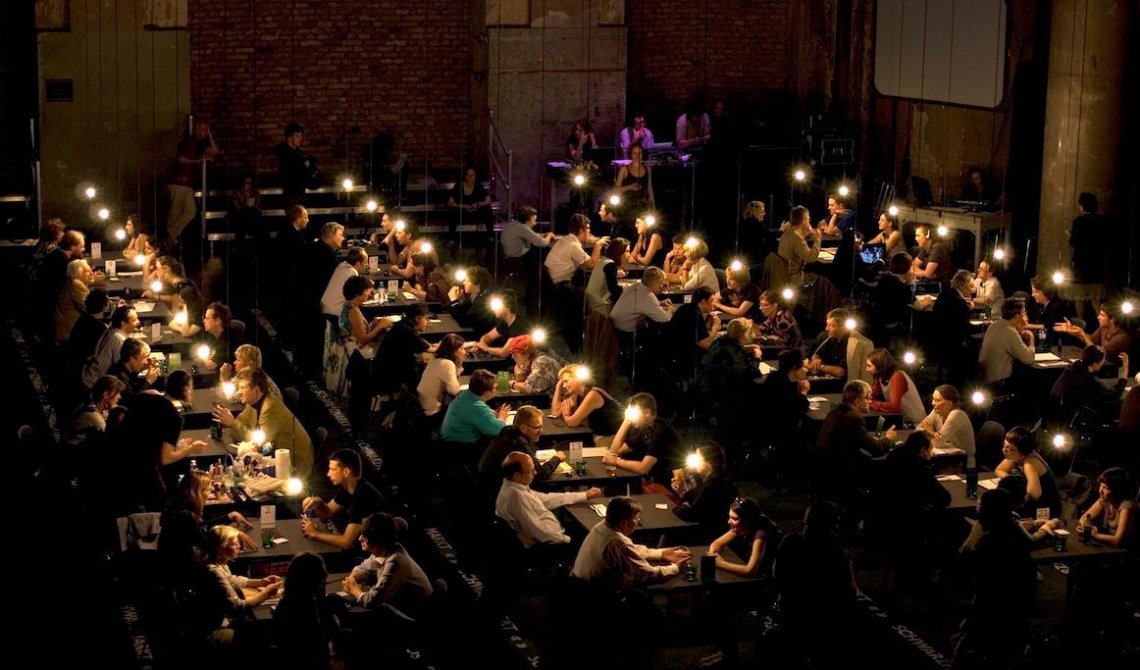
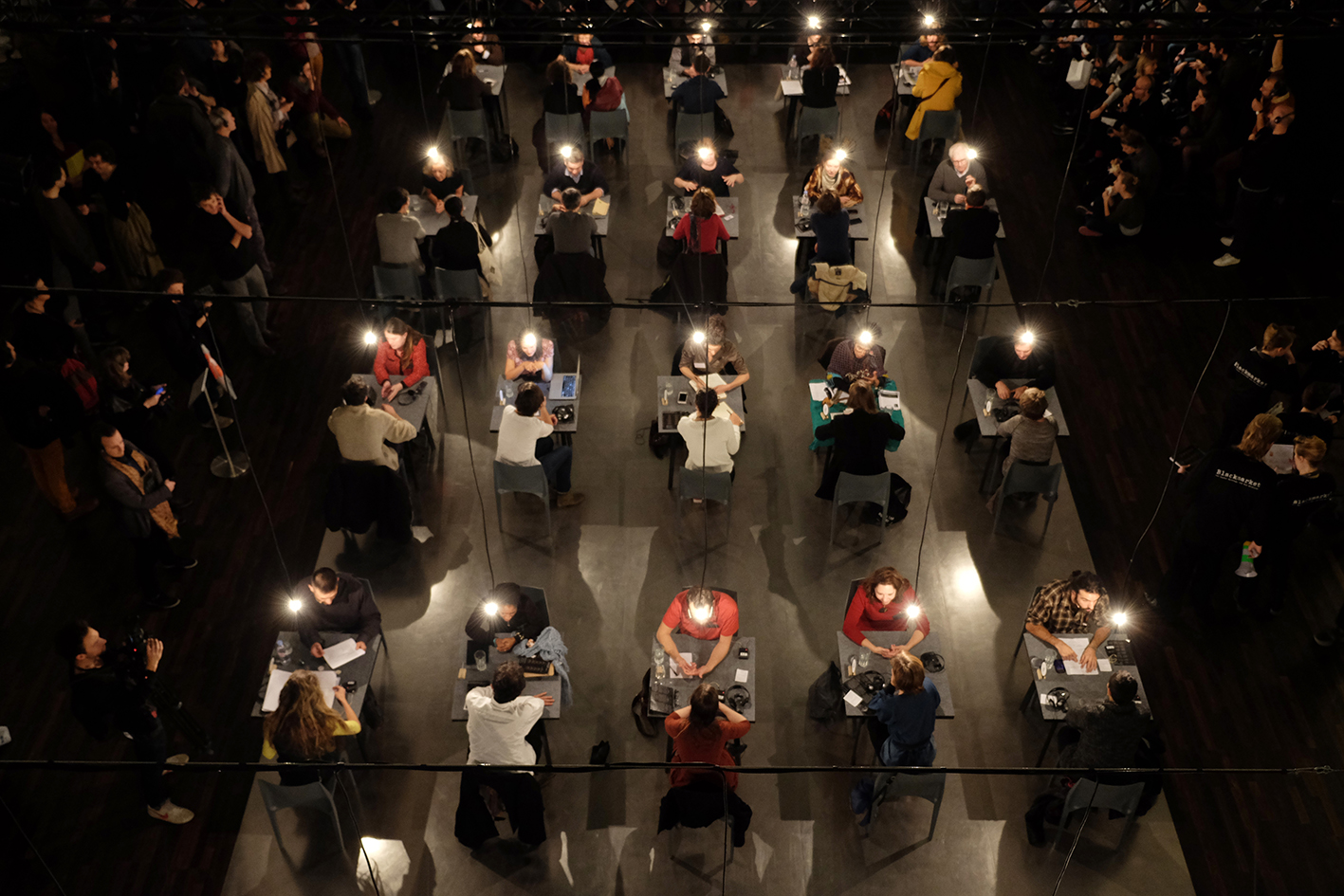
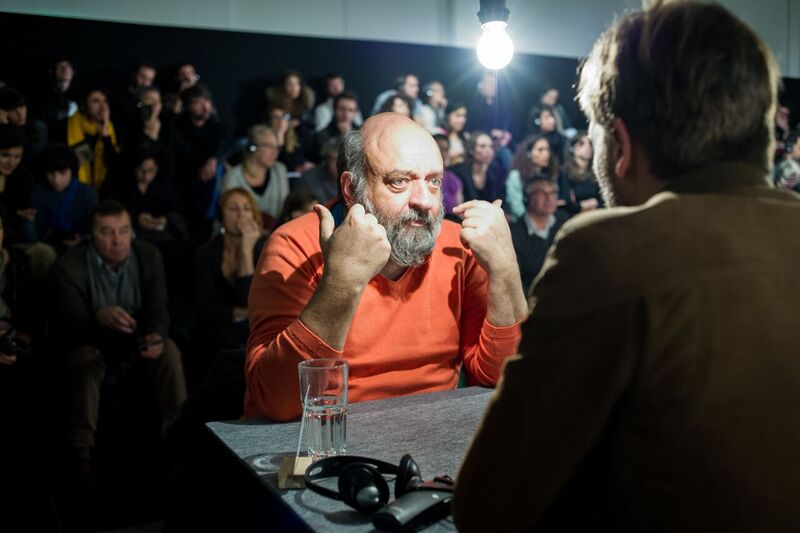
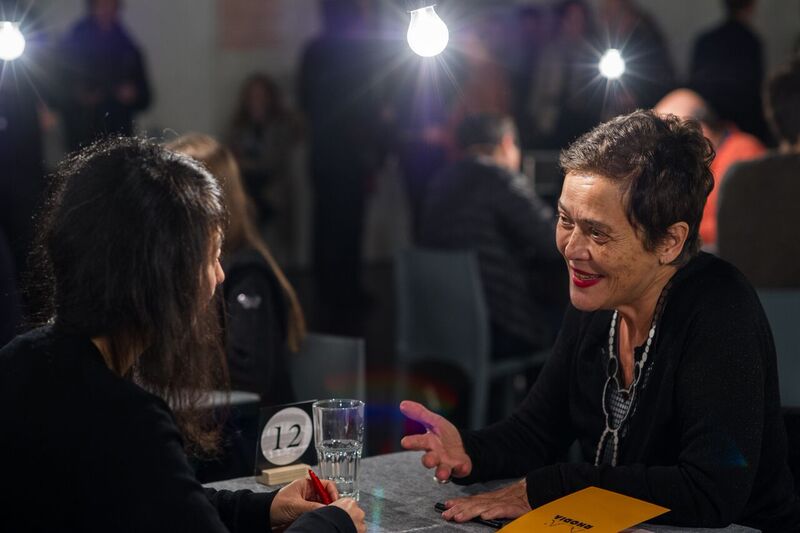
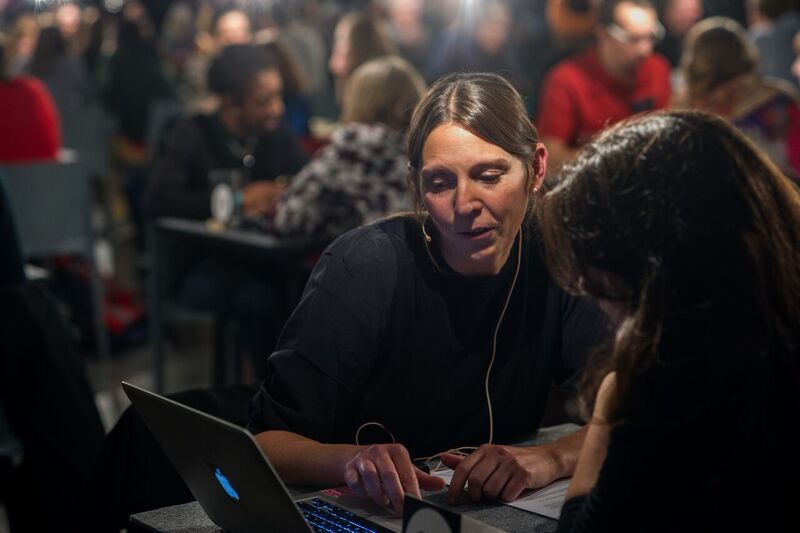
CONCEPT BY
Hannah Hurtzig (Mobile Academy Berlin)
CURATED BY
Alexander Klose
Nataša Petrešin-Bachelez
CURATORIAL ASSISTANT
Laurens Otto
SCIENTIFIC ADVISOR
Denis Couvet (Museum National d’Histoire Naturelle)
EXPERTS
Jamika Ajalon
Ingrid Amaro
Brook Andrew
Xavier Bailly
Mathieu Baudin
Irène Bellier
Judith Boon
Seloua Luste Boulbina
Isabelle Cambourakis
Silvia Casalino
Ewen Chardronnet
Joanne Clavel
Marcel Courthiade
Patrick Degeorges
Alain Della Negra and Kaori Kinoshita
Patrick De Wever
Vinciane Despret
Pierre Ducret
Rachel Easterman-Ulmann
Yona Friedman
Nadim Ghodbane
Fabien Giraud
Sophie Godin-Beekmann
Philippe Grandcolas
Sebastian Grevsmühl
Anahita Grisoni
Jean Paul Guevara
Émilie Hache
Florence Hachez-Leroy
Évelyne Heyer
Sophie Houdart
Liza Japelj Carone
Krõõt Juurak
Sonia Kéfi
Razmig Keucheyan
Nora Kravis
Sabrina Krief
Annick Labeca
Léopold Lambert
Annamaria Lammel
Catherine Larrère
Bruno Latour
Hervé Le Bras
Marie Lechner
Guillaume Lecointre
Guillaume Leterrier
Nathalie Magnan
Axel Meunier
Tarik Meziane
Yann Minh
Marie-Hélène Moncel
Yoann Moreau
Romain Nattier
Émilie Notéris
Martin Préaud
Heidi Quante
Philippe Rahm
Kalina Raskin
Marc-André Selosse
Ashkan Sepahvand
Maja Smrekar and Lord Byron
Benjamin Steininger
Catitu Tayassu
Hugo Teave
Jennifer Teets
Sylvie Teveny
Vaia Tuuhia
Françoise Vergès
Stéphane Verlet-Bottéro
Paul Watson
ARTISTIC COORDINATION
Sarah Lewis (Mobile Academy Berlin)
COMMISSIONED BY
Council
Alexandra Cohen (Cuesta)
EXECUTIVE PRODUCTION
Arter/Vivanto
PRODUCTION COORDINATION
Anne Becker
Julie Le Gall (bureau plato/KP)
TECHNICAL DIRECTOR
Julien Bahuau
COMMUNICATION
Rozenn Tanguy (Agence Ticoët)
TRANSLATION
Adelaïde Pralon
DESIGN
Remco Van Bladel
Julien Couret
SPECIAL THANKS
Emmanuel de la Baume
Solène Guillier
Bernard Guirkinger
Barbara Klose-Ullmann
Catherine Larrère
Valérie Pihet
Maria Ines Rodrigues
WITH THE PARTICIPATION OF
Muséum national d’histoire naturelle – Musée de l’Homme, Paris.
LINKS
Mobile Academy Berlin
Le Musée de l’Homme
SUPPORTED BY
La Région Ile-de-France
Le Bon Coin
Suez Environnement
The Nature Addicts Fund
La Ville de Paris
CNRS
Union européenne, Fonds FEDER-Interreg France-Suisse
Fondation de France
Slovenian embassy, Paris
Projet labellised COP 21
Top video: Filming and editing by Pierre-Emmanuel Testard.
On Becoming Earthlings
6.
Shoreline Movements, Taipei Biennial, 2020
Exhibition
5.
Zhou Tao, North of the Mountain, 2019
New Work
4.
On the Collaborative Creation of Artists Films and Videos, Loop Barcelona, 2018
Talk
2.
On Becoming Earthling, Dhaka Art Summit, 2014
Workshop
1.
Market for Useful Knowledge and Non-Knowledge #18, 2015
Program